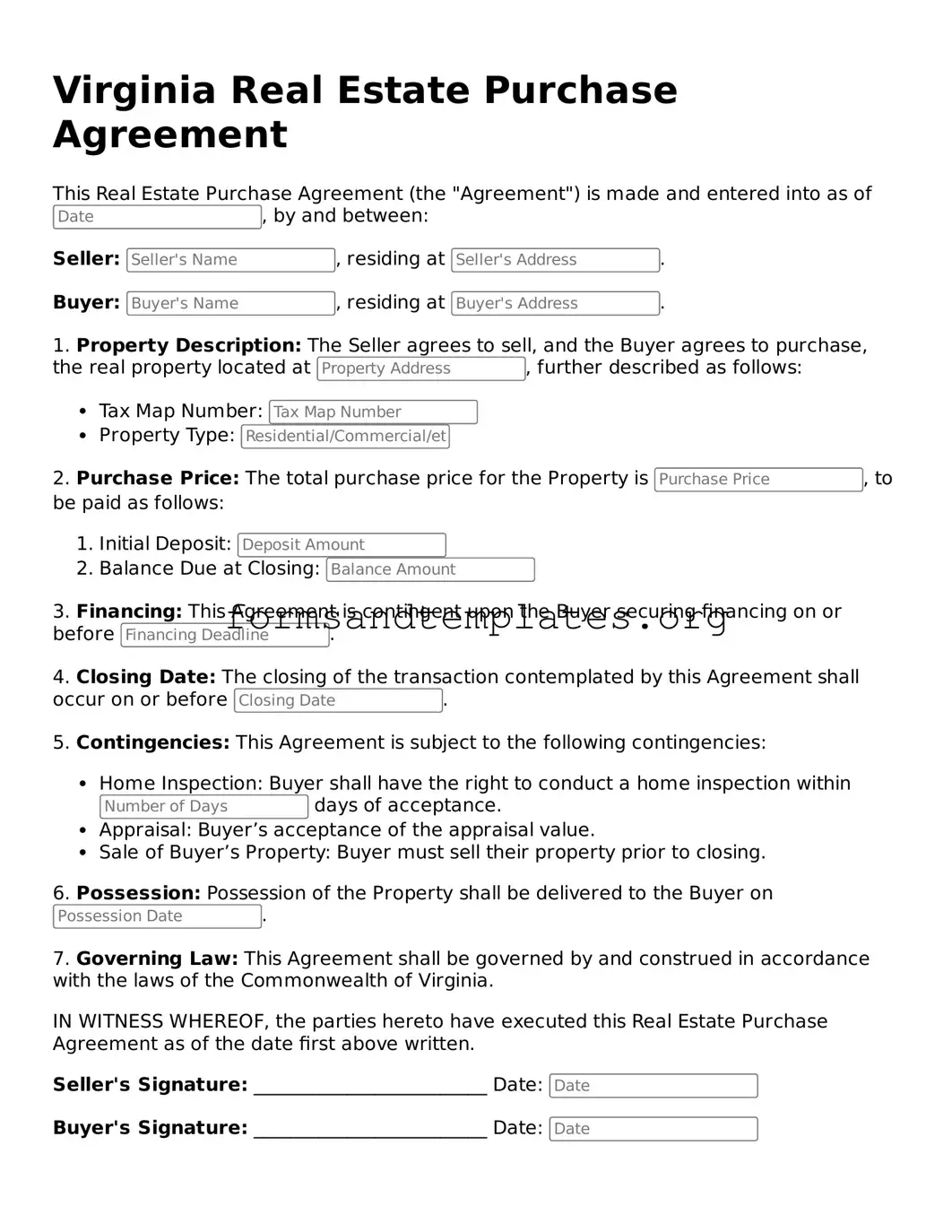Real Estate Purchase Agreement Template for the State of Virginia
The Virginia Real Estate Purchase Agreement is a legal document that outlines the terms and conditions of a property sale between a buyer and a seller in Virginia. This form is crucial for ensuring that both parties understand their rights and obligations during the transaction. To move forward with your real estate purchase, fill out the form by clicking the button below.
Access Editor Here
